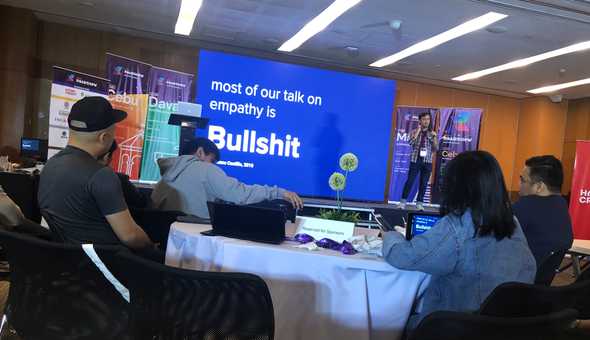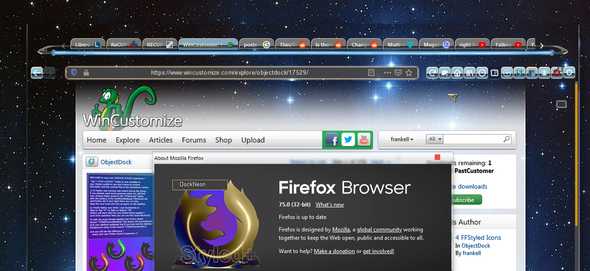What makes a community?
According to Wenger (1998), professional comminuties and communities of practice comprise
people who share a concern or a passion for something they do and learn how to do it better as they interact regularly.
Essentially, a group of people united by passion and interest for something could be considered a community, if while performing their activities, the members of the group would prioritise learning and exchanging knowledge.
Lave and Wenger (1991) emphasise the importance of
shifting the analytic focus from the individual as learner to learning as participation in the social world.
Does that mean that consuming books, polishing hard skills, and becoming great at a certain craft means nothing if the learning process is not situated within the community? Can one assume that the lack of exchange of knowledge, connection, and sharing would mean learning in vain?
Throughout my design practice, I’ve been rather shy to share my projects (and only did so when forced to), and rarely thought of participating in the community of any kind as of a mean of growing as a practitioner.
Learning of various communities, growing as a designer and as a person, and challenging my previous assumptions how professional communities work, I come to an understanding that only while being part of a group of practitioners sharing similar goals, can one learn how to apply knowledge effectively and overcome challenges. As Lave and Wenger (1991) put it, ‘learning is inherently a social process’: hence, the social interactions during the learning process are as vital as the learning itself.
Personal Experience
I have rarely been active in the design communities (ever), despite possessing some experience in the field and working on many exciting projects across all ASEAN region and beyond.
In October 2019, I participated in my latest to date real–life design conference — UX PH Roadshow in Manila, where global and local design leaders shared their experience, gave talks about culture, empathy, research.
The most memorable part of all was Matthew Green’s (Asian Development Bank) workshop on facilitating research and working with data. I absolutely loved Matt’s introduction (physical warm-ups used to be fun), and the practical part was extremely insightful and entertaining.
Just a few months back I myself participated in a talk on switching into UX design, hosted by Friends of Figma, which was incredibly fun.
Meeting people whose story is somewhat similar to yours, and getting a chance to inspire those looking to change their lives and pursue the dream of becoming a designer, is incredibly empowering.
At the same time, I’ve always experienced anxiety when approaching the communities: either because of the impostor syndrome, or because I didn’t have an interesting story to share or a project to showcase, I still feel like I have very little to offer to the community.
In a way, researching the importance of communities brings me back to Week 5 and setting the SMART goals. I should add ‘be active in the community of your choice‘ to the list, more specifically — to join their daily and weekly discussions, leave at least 5 comments each week in their Discord chats, and participate in the webinars they host every month. This way, I can make more friends and connections, learn something new, and discover whether my story is truly worth sharing.
Researching the communities
Local Communities
Singapore is a rather tiny country, and the choice of the local design communities to join is a tad limited. I already spoke about my involvement with Friends of Figma, I would love to get more active in their channels.
Finding a Role Model
Outside the many people I work closely with, if I were to find one designer whose craft I admire, I would name Dries Depoorter — an artist and a craftsman who works on weird products.
Working on Inspickle — a fake grocery planning app that would automatically replace unhealthy items with healthy analogues, I drew inspiration from Dries’s Shortlife and other projects.
Dries’s exception fantasy and creativity are paired with his impeccable craft and skill. He delivers outstanding products of great quality, and his personal style is simply remarkable.
Open-Source Community
As I wrote previously, I am very much open to using FOSS. I once wrote an article about designers using and contributing to the development of the open-source software.
In my article, I wrote about why open-source community didn’t welcome designers until recently, but luckily, things are changing. I myself would love to contribute to the development of a few open-source products I’m using on a daily basis — Firefox (although the opportunities that are open to designers with them are rather limited), Thunderbird (I already started working on a redesign project, but the community doesn’t seem to appreciate the changes), and a few others.
Ethnography Report
For this week’s activity, I decided to study the community I have joint very recently — the Friends of Figma Singapore group. Since gatherings, offline activities, and pretty much any type of physical interaction (except commuting to and from work) is not allowed in Singapore at the moment, I had to observe the community and its activity online, actively following the threads in Discord, attending a webinar (on UX Writing and cross-cultural design!), and making my notes as I went along. FoF is the largest and the most active community of design practitioners on the island: they are open-minded, organized, well-established, and are there to help young and seasoned professionals alike. It’s a diverse community that speaks many languages and unites designers and engineers from all walks of life and professions.
Speaking of languages, it is important that the tone of voice the group maintains is very informal and friendly. Their branding is designed to be approachable and friendly: bold playful fonts, constructivist-like shapes and simple colours, and they maintain the same style in their communication as well. It doesn’t mean, however, that they are acting less professional because of that — quite the opposite, they use emojis to sound more approachable, but often raise serious topics, such as mental health, share research materials, books, articles, give feedback.
The group organizes big talks and webinars every month, often inviting great speakers, and making sure to warm the crowd up before the talk. It is always done very well, with no technical issues, delays, and complications. Backgrounds and presentation templates are shared by the speakers, creating a sense of comradely, uniting them in a cause. For less formal events, the group comes together once a week or so — for instance, to watch a design documentary together. The atmosphere is always very casual and engaging: everyone is encouraged to have fun and learn, in that order.
The online community, organized in Discord, comprises several sections: events, where the announcements are posted, recommendations, where people share their favourite design books, links, and practices, and a few more. There is a space for those who are new to UX — a place where they freely ask questions and get answers from experienced peers; a job board bulletin; a wins-and-fails chat, quite self-descriptive; and some other small rooms where people discuss anything — from design management to career building. FoF encourages its members to stay active and feel free to share their thoughts and ask questions — once a week, they share a form and consolidate the questions, and later post the most popular in a separate channel: a fun little activity where different people find different answers to the same question.
As for the rules, the community employs zero tolerance policy for discrimination, NSFW content, and spamming/trolling. Self-promotion and job posting are limited to respective channels. Other than that, the main rule of the game is to have fun, share knowledge, make friends, and grow as a designer.
References
LAVE, J. & WENGER, E. (1991). Situated learning: Legitimate peripheral participation. New
York: Cambridge University Press.
WENGER, E. (1998). Communities of practice: learning, meaning, and identity. New York:
Cambridge University Press.


